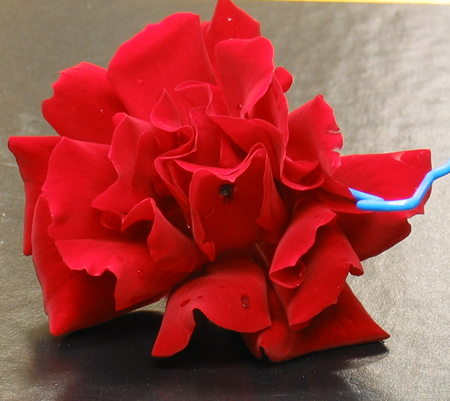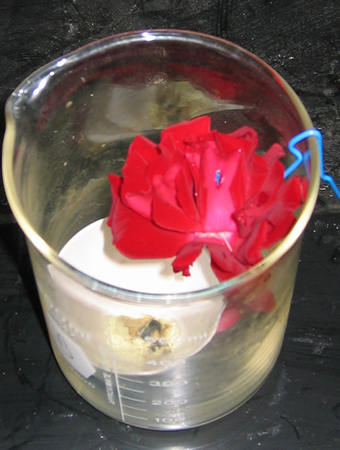TURN A RED ROSE WHITE
SED 695B; Fall 2005


TURN A RED ROSE WHITE | ||
| Author(s): Denise Agapoff & Harold Collier |
Discrepant Event - Teacher's Guide SED 695B; Fall 2005 | |

|

| |
| Detailed Explanation of Discrepant
Event |
|||
| Principles illustrated
|
By burning the sulfur, sulfur dioxide gas (SO2)
is formed. SO2 + red rose pigment---> SO42- + reduced pigment (white) Going further: the reduced pigment (white) can be oxidized again by putting the rose in nitrogen dioxide gas. See video below. reduce pigment (white) + NO2---> NO + oxidized pigment (red) |
||
|
Standards
|
|||
| Questioning Script Prior knowledge & experience: Root question:
Target response:
Common Misconceptions:
Other possible questions:
|
|||

|
Procedure
|
||
 |
Safety precautions
|
||
| References & Links: Science Inquiry
|
|||